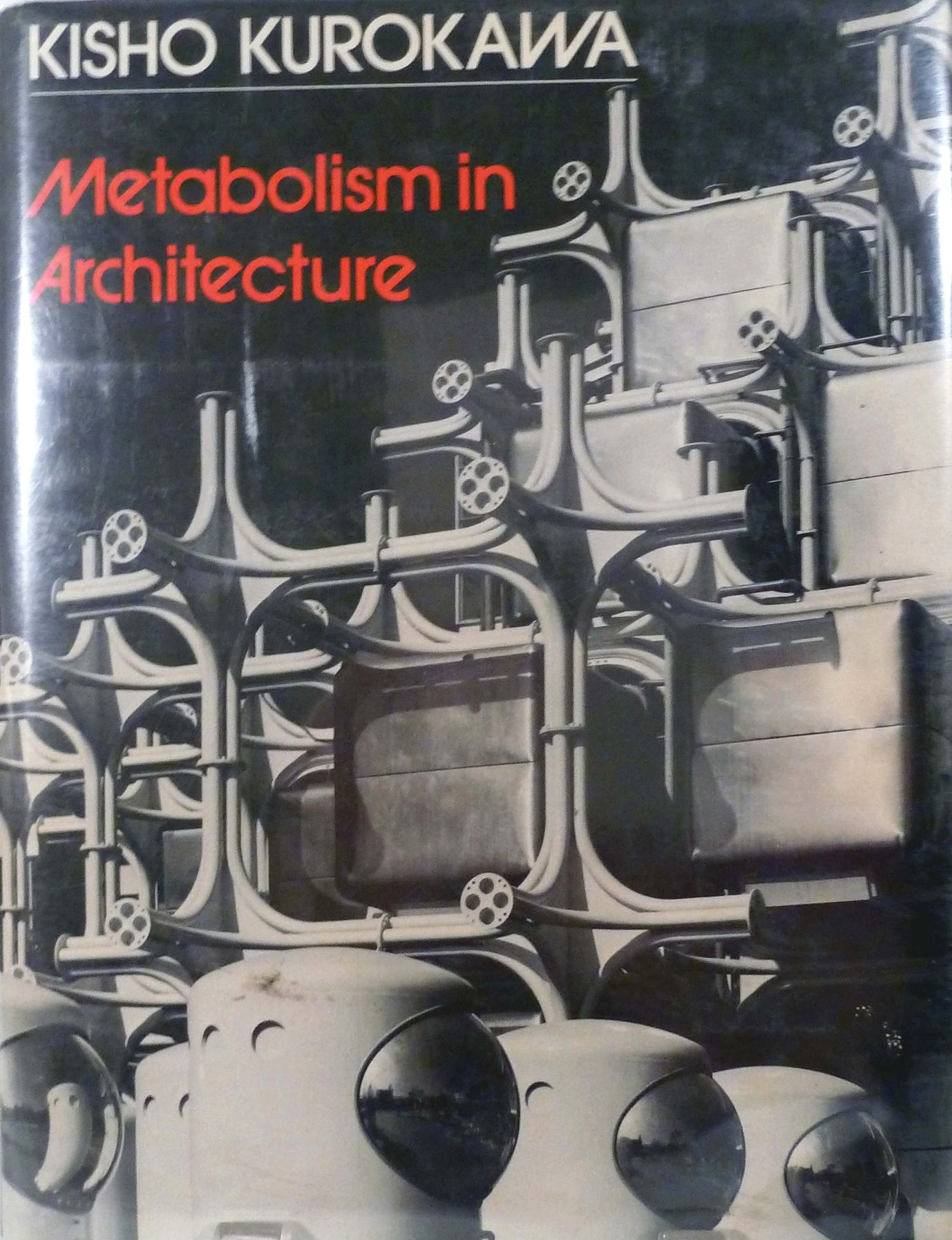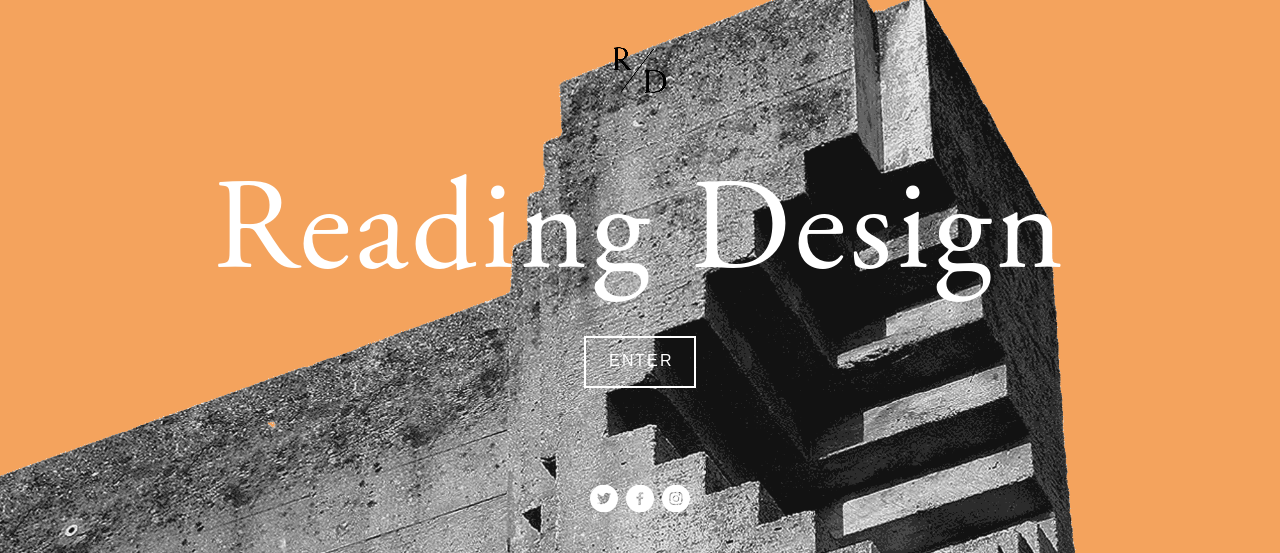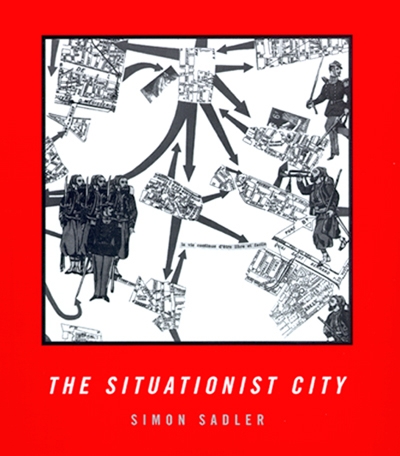Kisho Kurokawa: Metabolism in Architecture (1977)
Filed under book | Tags: · architecture, city, history of architecture, media, metabolism, urbanism

A collection of essays on the emergence and continued theorization regarding the architectural movement known as Metabolism.
“This book is a collection of my most important works-in architecture and theoretical writing -from the period 1960 to 1975. I have chosen the title Metabolism in Architecture despite the fact that the Metabolist group, formed in 1960, now carries on virtually no activity as a group, and despite the many changes in my work and thought in the fifteen years since the Metabolist movement began. The word ‘metabolism’ nevertheless stands in order to secure a wider understanding of the concept and because there is value in using it in this extended sense. I was also led to select this title out of a desire to reflect upon and organize the relation between my writings and works of these fifteen years and Metabolist thought.
For the convenience of the reader the book is organized into four chapters. The architecture and writings are not in chronological order, although the date at which each work was designed or written is important to me. As we live in an international society with rapid communication in which we are constantly open to new influences the date for each piece indicates the spirit in which it was written.
Although I reject traditionalism, I attach great importance to the influence which the culture of one country may exert on another. It is my belief that the cultures of different countries will stand individually but together, allied with technology, to provide the future language of architecture. That modern architecture appears diffuse is proof that the cultures of different regions each contribute to the language of modern architecture, and as a result modern architecture will probably come to speak not with a lingua franca but with a complex and many-faceted language.” (from Preface)
Publisher Studio Vista, London, 1977
ISBN 0289707331, 9780289707333
208 pages
via ARG
PDF (62 MB)
Comment (0)Reading Design (2013–)
Filed under online resource | Tags: · architecture, critical design, design, fashion design, graphic design, industrial design, theory, urbanism

“Reading Design is an online archive of critical writing about design. The idea is to embrace the whole of design, from architecture and urbanism to product, fashion, graphics and beyond. The texts featured here date from the nineteenth century right up to the present moment but each one contains something which remains relevant, surprising or interesting to us today.
Reading Design is not a magazine or a journal and many or most of the texts here will have been published before. They might be papers, transcriptions of lectures, articles, essays, academic texts, photo essays, sketches or blog posts but the aim is to collate these texts in one place to build a resource which we hope will become invaluable to designers, academics, researchers, professionals and all those with any interest in design at all. It is a library of design which we hope is able to use the enormous capacity of the internet in a way in which it is not currently being used.
Reading Design is a non-profit making venture aiming to make pivotal texts available to all and to provoke, delight, enlighten, inspire, inform and occasionally infuriate.”
Editor-in-chief: Edwin Heathcote
Associate editor: Krisztina Heathcote
Simon Sadler: The Situationist City (1998)
Filed under book | Tags: · architecture, city, design, situationists, urbanism

“From 1957 to 1972 the artistic and political movement known as the Situationist International (SI) worked aggressively to subvert the conservative ideology of the Western world. The movement’s broadside attack on “establishment” institutions and values left its mark upon the libertarian left, the counterculture, the revolutionary events of 1968, and more recent phenomena from punk to postmodernism. But over time it tended to obscure Situationism’s own founding principles. In this book, Simon Sadler investigates the artistic, architectural, and cultural theories that were once the foundations of Situationist thought, particularly as they applied to the form of the modern city.
According to the Situationists, the benign professionalism of architecture and design had led to a sterilization of the world that threatened to wipe out any sense of spontaneity or playfulness. The Situationists hankered after the “pioneer spirit” of the modernist period, when new ideas, such as those of Marx, Freud, and Nietzsche, still felt fresh and vital.
By the late fifties, movements such as British and American Pop Art and French Nouveau Ralisme had become intensely interested in everyday life, space, and mass culture. The SI aimed to convert this interest into a revolution—at the level of the city itself. Their principle for the reorganization of cities was simple and seductive: let the citizens themselves decide what spaces and architecture they want to live in and how they wish to live in them. This would instantly undermine the powers of state, bureaucracy, capital, and imperialism, thereby revolutionizing people’s everyday lives.
Simon Sadler searches for the Situationist City among the detritus of tracts, manifestos, and works of art that the SI left behind. The book is divided into three parts. The first, “The Naked City,” outlines the Situationist critique of the urban environment as it then existed. The second, “Formulary for a New Urbanism,” examines Situationist principles for the city and for city living. The third, “A New Babylon,” describes actual designs proposed for a Situationist City.”
Publisher MIT Press, 1998
ISBN 9780262193924
ix+233 pages
via heimitokunst, ¯\_(ツ)_/¯
Reviews: Andrew Hussey (LRB, 1999), Notbored (n.d.), Andy Merrifield (Harvard Design Mag, 2000), Rosemary Wakeman (French Polit Cult Soc, 2000), James L. Penner (TDR, 2001), Sarah Deyong (J Society Arch Hist, 2001), Benedict Seymour (Mute, 2004), Natasha Gershfield (Manchester School Arch, 2010).
Comment (0)
